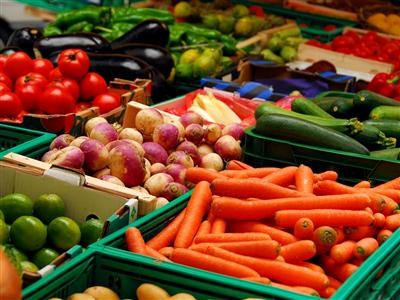With Type II diabetes on the rise, many people are concerned with foods that raise glucose levels in the blood. There is a difference between simple and complex carbohydrates, and the way that they are digested. However, this can be taken a step farther with the glycemic index. Here is information to help you get a better understanding of the foods that you eat, and their effect on blood glucose levels.

Understanding the Glycemic Index
by CRfan
The glycemic index is a way of gauging how a particular food affects blood sugar levels.
Simple and Complex Carbohydrates
The GI is based on the simple sugar glucose. Glucose is given a value of 100 and all other sugars are compared to this and its effect on blood sugar levels. A low GI food is considered one that has a value of 55 or lower.
Carbs that are broken down very quickly and affect the blood sugar levels faster are given a higher value and conversely a low GI value means that a particular carbohydrate is broken down slower.
Not all carbohydrates are created equal. For example, when you eat simple carbohydrates like sugar or honey, they will be broken down quickly. This means that they will be in your bloodstream in a short amount of time. When you eat things like sweet fruit or sweets, your blood glucose levels well rise very quickly. If someone already has high blood sugar, this can be very dangerous.
Complex carbohydrates are also known as starches. A good example of complex carbohydrates is grains and beans. It takes much longer to digest grains than simple sugars. This means that sugar enters the bloodstream at a slower rate. It is safer to eat these foods, than to eat simple carbohydrates.
A Step Further
Another benefit of lower GI foods is that they are more slowly digested and help you feel full longer, preventing hunger spikes that might tempt you to eat an unhealthy snack between meals.
Generally whole grains, vegetables and proteins are low GI foods and high GI foods are those with refined sugars. Basically all junk food and snacks are high GI foods due to their heavy processing.
Benefits of Low GI Foods
Besides helping you feel fuller for longer the lower GI foods are better for your health in general. Insulin resistance is typical of those with type 2 diabetes or those at risk for developing type 2 diabetes. Avoiding the blood sugar spike with high GI foods gives your body more time to release insulin and move sugar inside cells where it belongs.
 Good Carbs |
Helpful Lists of GI Values
Summary
The glycemic index is a good way to understand which foods to eat and which to limit, if you have blood sugar concerns. This list gives a better understanding of simple and complex carbohydrates. When you eat foods with a low number, your blood sugar will not spike as much as foods with a higher number. This can be beneficial to those with diabetes concerns, or people that wish to lose weight. If you are unclear about what to eat, talk to your doctor.
 | The Glycemic-Load Diet: A powerful new program for losing weight and reversing insulin resistance A cardiologist's revolutionary weight-loss plan that allows dieters to enjoy good carbs while still losing weight The glycemic index has been the basis of many popular diets. Bu... |
 | The Everything Glycemic Index Cookbook (Everything (Cooking)) Switching to a low-GI diet is the key to losing weight--and keeping it off, especially for those suffering from obesity, diabetes, and metabolic syndrome. With this new edition ... |
You might also like
5 Crazy Myths About VeganismThere’s a general opinion that vegans are a bunch of pasty-faced, undernouris...
Don't get fat this ChristmasHaving lost weight, I am a little anxious about the approaching season and ha...



 How The FDA Approves New Medicineson 08/16/2013
How The FDA Approves New Medicineson 08/16/2013
 10 Tax Mistakes Business Owners Makeon 08/05/2013
10 Tax Mistakes Business Owners Makeon 08/05/2013
 Accessories For Traveling With Jeweleryon 02/12/2013
Accessories For Traveling With Jeweleryon 02/12/2013
 Stages of the Sleep Cycleon 09/23/2012
Stages of the Sleep Cycleon 09/23/2012



Comments